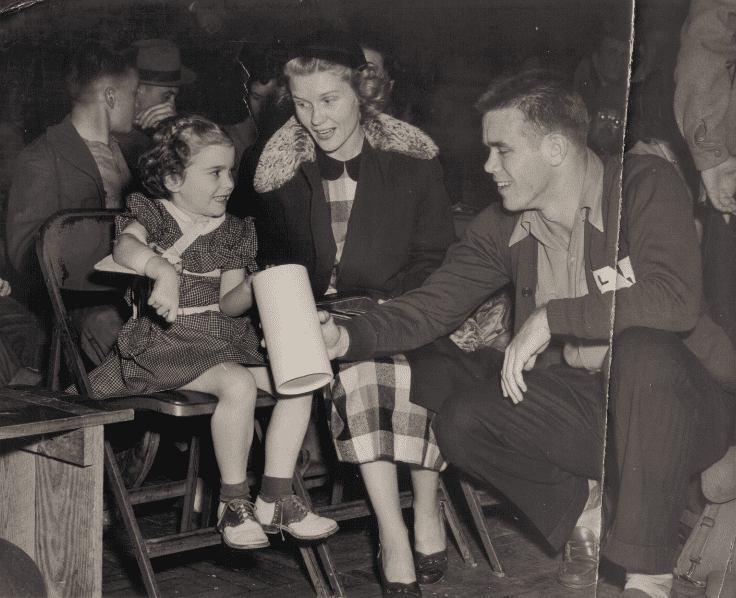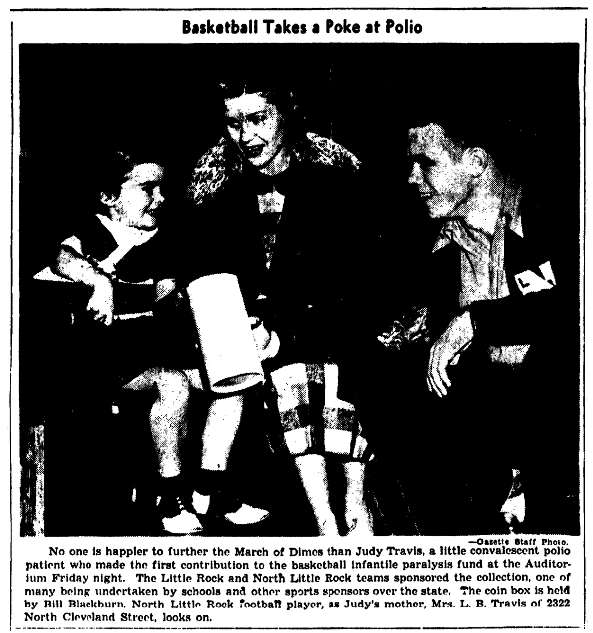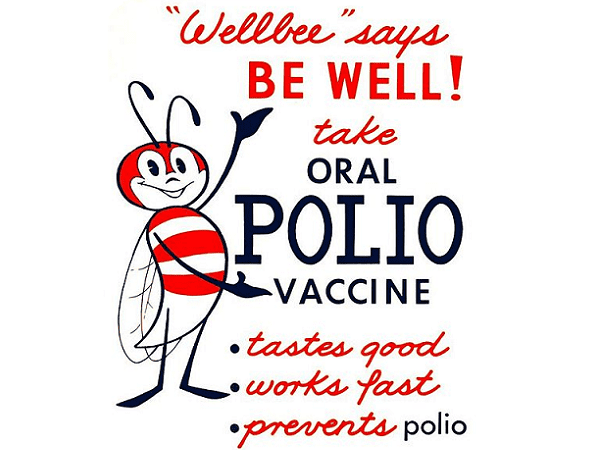Introduction: In this article, with the whole world hoping for a coronavirus vaccine, Jane Hampton Cook writes about the vaccine that conquered polio 65 years ago – a very personal story for her. Jane, the former White House webmaster for President George W. Bush, is a presidential historian and the author of nine historical books. She is a consultant for the Women’s Suffrage Centennial Commission. Her works can be found at janecook.com.
From sewing masks to donating food, Americans have shown a giving spirit during the COVID-19 pandemic. A similar spirit existed in the 1950s during another deadly epidemic: polio.

The March of Dimes was helping the fundraising effort in the 1950s for research into a polio vaccine. One such effort, in Arkansas, was highlighted in this 1951 newspaper article.

Contracting polio in 1949 at age four, Judy had lost the use of her right shoulder. The photo caption noted:
“No one is happier to further the March of Dimes than Judy Travis, a little convalescent polio patient who made the first contribution to the basketball infantile paralysis fund at the Auditorium Friday night.”
Averaging 35,000 U.S. cases a year, polio peaked in 1952 with 57,000 cases. Polio killed 2-5 percent of infected children and 15-30 percent of infected adults. It also left 1-2 percent with paralysis, often in limbs. Like Judy, in many cases the paralysis was permanent.
Pooling their resources through the March of Dimes, Americans longed for the day when a vaccine would eradicate this deadly and disabling disease. Polio was finally conquered when Dr. Jonas Edward Salk’s polio vaccine was announced as a safe treatment on 12 April 1955, 65 years ago.
A search on the keywords polio, Salk, and vaccine in GenealogyBank’s Historical Newspaper Archives tells the story of this great American medical achievement, one that can give Americans hope during the COVID-19 pandemic.
“Polio Threat Conquered by Salk Vaccine,” the Arkansas Democrat’s front page declared after epidemiologist Dr. Thomas Francis Jr. announced the effectiveness of Dr. Jonas Salk’s vaccine.
This article’s first sentence reported:
“The Salk polio vaccine works – safely, potently – and can virtually end the icy fear that long has gripped the hearts of parents.”
Francis and Salk purposely announced the vaccine’s effectiveness on the tenth anniversary of the death of Franklin Roosevelt, who suffered from polio and started the National Foundation for Infantile Paralysis (March of Dimes) that funded their research.
Polio was discovered in 1789, and the nation’s newspapers praised Salk’s vaccine for ending the 166-year scourge of the disease.
Oveta Culp Hobby, the U.S. Secretary of Health, Education and Welfare, licensed six firms to make and distribute the vaccine. “It’s a great day, a history making day,” declared Mrs. Hobby. “It’s a wonderful thing for the whole world.”
This article reported:
“The vaccine is far better than the vaccine tested last year, and it can theoretically prevent paralytic polio 100 percent, declared Dr. Jonas Salk, brilliant young Pittsburgh, Pa., scientist who developed it.”
Did Judy Travis, the five-year-old at that 1951 Little Rock March of Dimes fundraiser, receive the vaccine? Yes. Because the polio virus came in three strains, she also received the vaccine to protect her from the other strains. By the time her daughter [the author of this article] was a child in 1979, polio was eradicated in the United States.
Today a COVID-19 vaccine is already undergoing testing, with hopes of distributing it in 12 to 18 months. “Ultimately the show stopper will be obviously the vaccine where you can vaccinate people,” Dr. Anthony Fauci, director of the U.S. National Institute of Allergy and Infectious Diseases, said on 6 April 2020, of the projected final solution for COVID-19.
